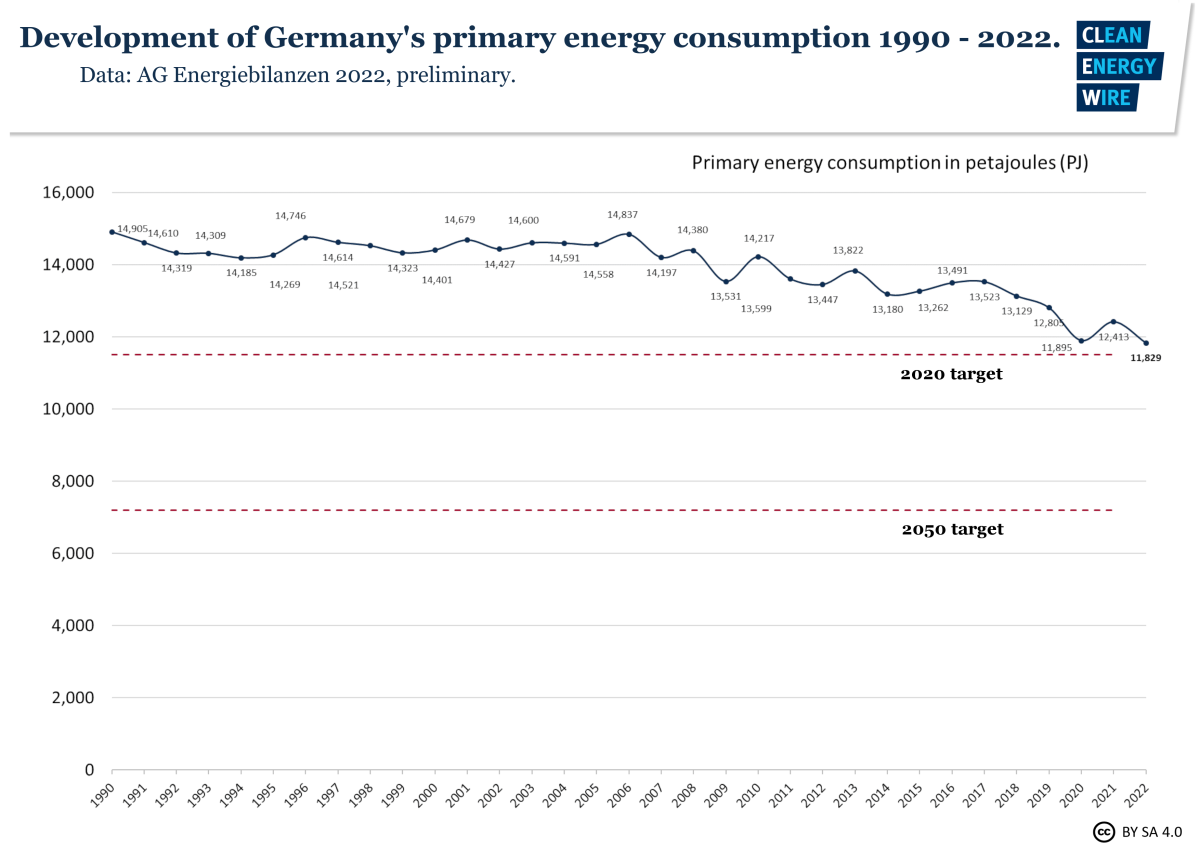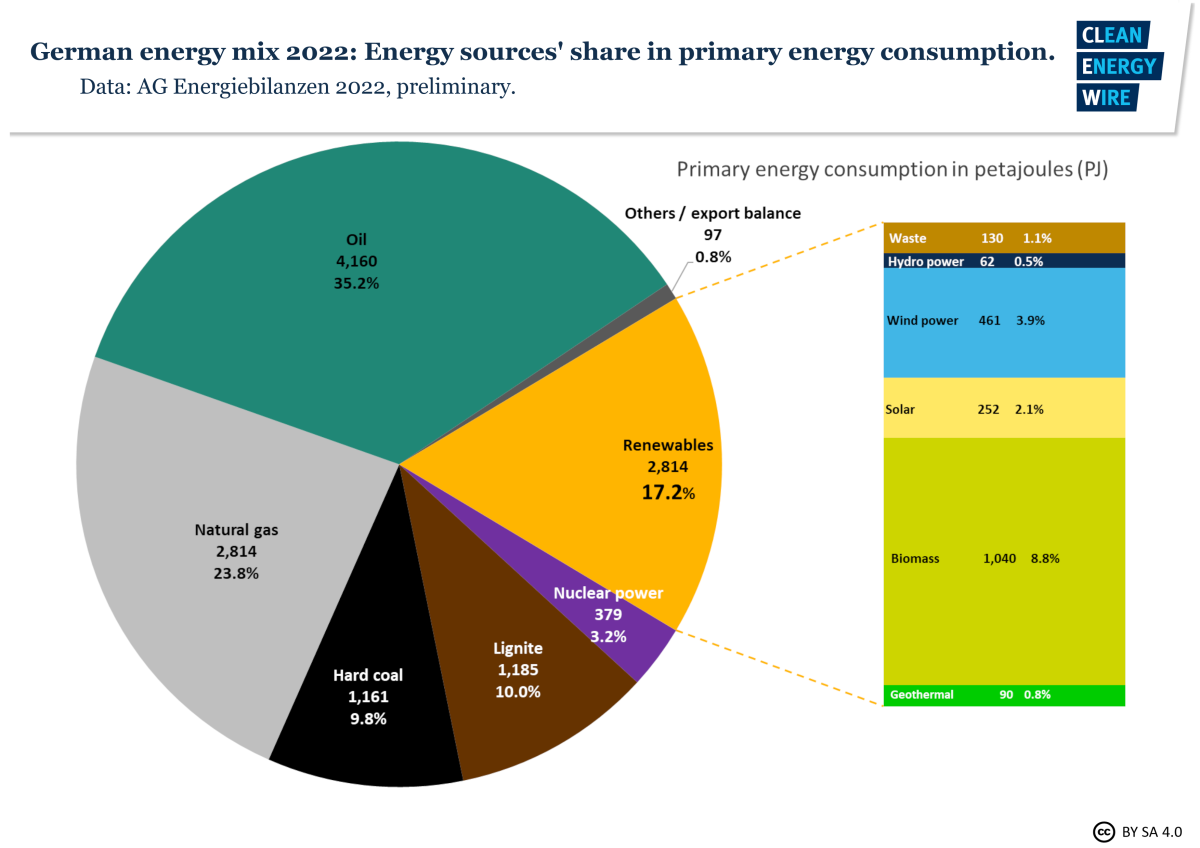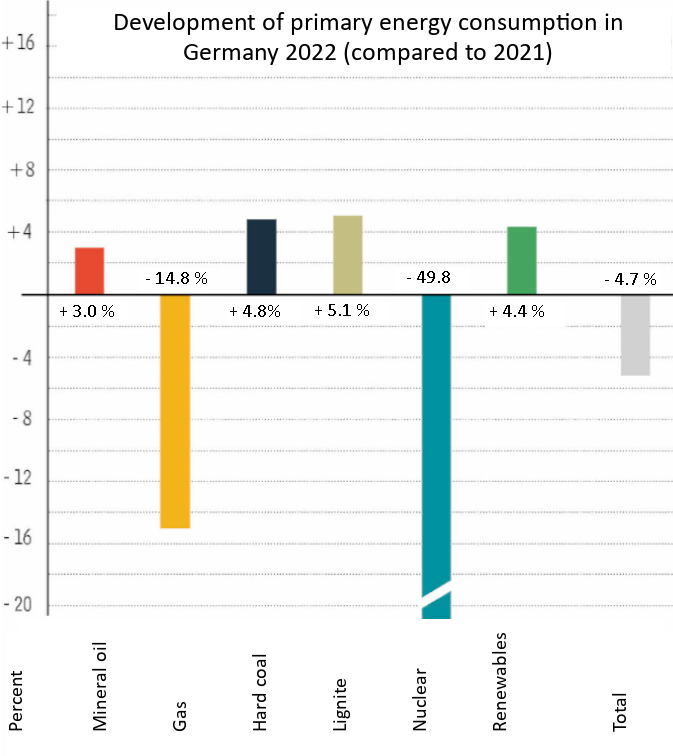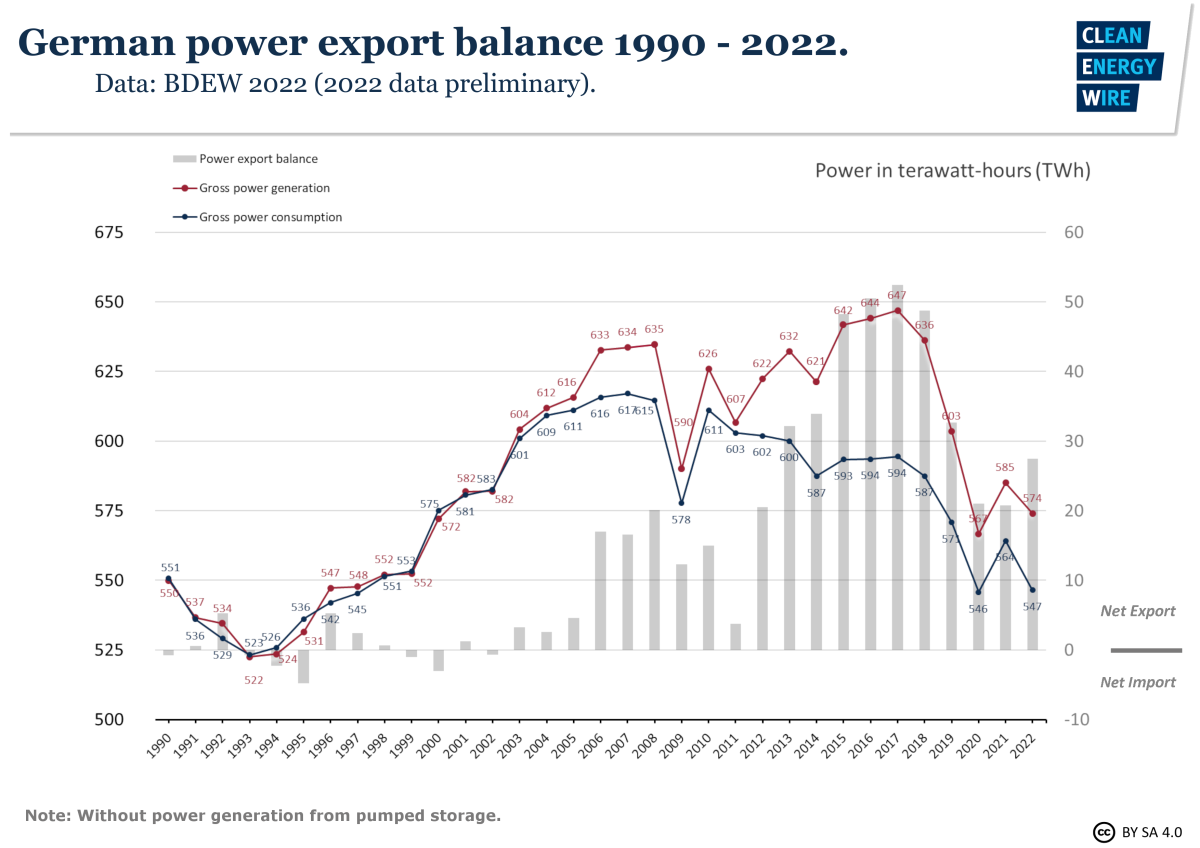Energy crisis pushes German energy use in 2022 to lowest level since reunification
The energy crisis and milder temperatures have pushed Germany’s energy consumption in 2022 to the lowest it has been since the country’s reunification. At 11.829 Petajoule (PJ), the country decreased its energy use by 4.7 percent compared to last year, according to preliminary data by energy market research group AGEB. While a growing population and economic production increased energy consumption, a sharp rise in energy prices - which led to energy savings and energy efficiency investments - all contributed to the “significant decline in consumption”, according to AGEB. Additionally, price-related production cuts in industry and warmer weather also played a role.
The use of renewable power, as well as that of hard coal, lignite and oil increased in 2022, while consumption of gas and nuclear power decreased. Germany aims to increase the share of renewable energies in gross power consumption by 80 percent by 2030.
Energy-related CO2 emissions forecast to go down despite rise in coal use
To substitute natural gas – a large portion of which used to be delivered by Russia, and which accounted for 15.4 percent of Germany’s power production in 2021 – Germany increased consumption of hard coal and lignite for power production, bringing the share of gas down to 13.5 percent this year. While this led to an increase in CO2 emissions, AGEB expects overall energy-related CO2 emissions to decrease by one percent, as CO2 emission savings from reduced energy consumption were greater than the additional emissions brought on by increased coal use. According to AGEB, the warmer weather in 2022 accounted for about one percent of the reduction in energy consumption.
Gas consumption fell by almost 15 percent (accounting for 23.8 percent of primary energy consumption) in 2022 – the lowest level since 2014. Temporary milder weather, as well as demand and price-related sales declines are the reason for the reduction, according to AGEB. Russian gas deliveries into Germany dwindled and ultimately halted in September, increasing a focus on energy saving and diversification of energy providers.
Renewables and coal share see increase in Germany’s 2022 power mix
Hard coal consumption went up by almost five percent, with its use in coal power plants increasing by over 16 percent as the government ordered the temporary re-activation and delayed decommissioning of coal plants to replace gas in the power system as part of measures to combat the energy crisis. The share of hard coal in the power mix increased to 11.5 percent (from 9.3% 2021). Lignite consumption also rose by five percent, with its increased use compensating for reduced contributions from other energy sources for the generation of electricity and heat. The share of lignite in the power mix increased to 20.4 percent (from 18.6% 2021).
Energy consumption from renewable sources rose by 4.4 percent in 2022, pushing the share in power production to 44.6 percent (40.5% in 2021), with wind and solar energy especially benefitting from “exceptionally favourable” weather conditions. The renewables share in overall energy consumption is much lower at 17.2 percent (15.7% in 2021). Biomass, whose share in German renewable use is over 50 percent, recorded an increase in consumption of about 1 percent, while hydropower suffered from the prolonged drought, pushing output down by 13 percent.
Electricity exports were higher than imports as a result of shifts in the European electricity generation mix and increased generation from renewable energy in Germany.





